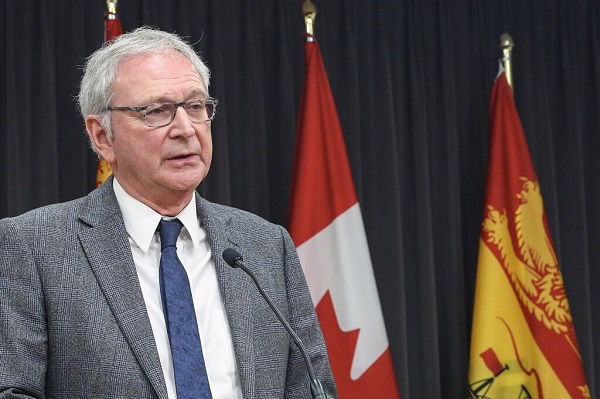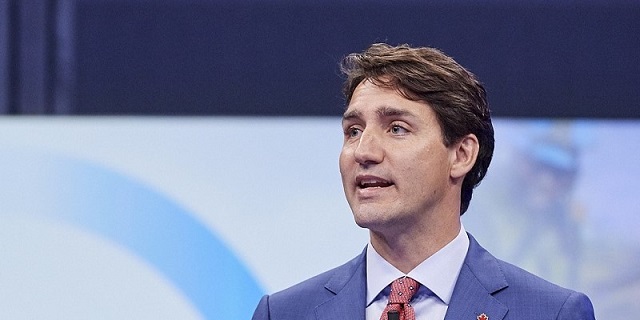Uncategorized
A Matter of Fact: The IEA’s updated net zero scenario is still unrealistic
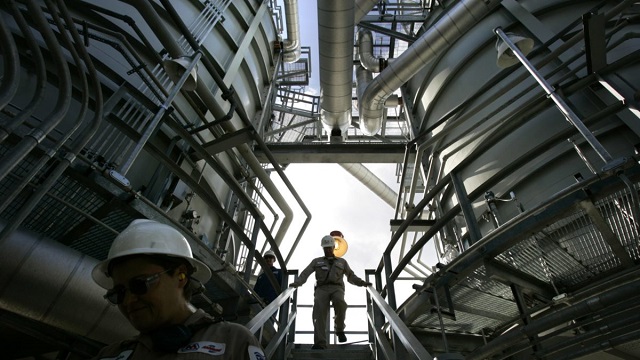
From the Canadian Energy Centre
By Deborah JaremkoCanada can lead the world with reliable, affordable energy supply and clean technology as countries work to reduce emissions
The International Energy Agency (IEA) has updated its net zero scenario, pushing for governments to implement more aggressive climate policies on the energy industry.
The IEA itself acknowledges the scenario is “a pathway, but not the only one” for the energy sector to reduce emissions to net zero by 2050.
The agency acknowledges the world is not on this trajectory, but the Government of Canada uses the net zero scenario as the basis for policies like its proposed oil and gas emissions cap, which will hurt Canadians without environmental gain.
“We’re the fourth-largest oil producing country, and we’re the only ones that are saying oil and gas is not here to stay. That’s a huge roadblock for all of us,” Gurpreet Lail, CEO of Enserva, the national trade organization representing energy service and supply companies, told the Globe and Mail during the World Petroleum Congress last week.
Canada can lead the world with reliable, affordable energy supply and clean technology as countries work to reduce emissions. But the sector needs to be allowed to thrive rather than being phased out while it is needed.
Here are the facts.
Fact: The IEA net zero scenario is not a forecast
The IEA’s updated net zero scenario envisions that the world does not need any new coal, oil and natural gas projects. By 2030, it imagines world oil demand will drop by 23 per cent, natural gas demand by 18 per cent, and coal demand by 44 per cent.
It’s difficult to see how this could actually come about, given that even with accelerating investment in low carbon energy resources the world’s consumption of oil, gas and coal is as high or higher than it has ever been. And rising.
The IEA reports both oil and coal demand are at record levels. The agency itself projects the world’s total energy consumption – which increased by 15 per cent over the last decade – will increase by a further 24 per cent by 2050.
On the world’s current trajectory, the IEA says oil, gas and coal will still account for 62 per cent of world energy supply in 2050, compared to 78 per cent in 2021.
“There’s no evidence that oil demand is going to peak any time soon,” Arjun Murti, former partner with Goldman Sachs, said at the recent Global Business Forum in Banff.
“Oil is not in its sunset phase.”
Fact: The IEA net zero scenario is unrealistic
The IEA’s net zero scenario includes components that are unrealistic.
For example, it says electricity transmission and distribution grids need to expand by around two million kilometres each year to 2030. But it also acknowledges that today, building these grids can take more than a decade, putting that scale and timeline already out of reach.
The net zero scenario also hinges on a “unified effort in which governments put tensions aside and find ways to work together.” But the IEA also acknowledges the world today is “a complex and low-trust geopolitical environment.”
Consider that Russia is trying to boost trade with Asia as economic ties with the West shrivel over Moscow’s actions in Ukraine, according to Reuters News. In just one example, state-owned Gazprom plans to start gas deliveries to China through the Power of Siberia pipeline in 2025 and expand that service in 2030 with Power of Siberia-2.
Russia’s invasion of Ukraine accentuated the world’s reversal away from the concept of globalization, where everyone benefits from the global economy, leading energy analyst and Pulitzer Prize-winning author Daniel Yergin said on a recent ARC Energy Ideas podcast.
“The era of globalization was what I call the WTO consensus: we’re all in this global economy together. In China, hundreds of millions of people come out of poverty. India enters the global economy, standards of living go up and you get really impressive economic performance,” Yergin said.
“Well, that era is ending and it’s heading pretty fast now as we move into this new era of great power competition, which hopefully does not become great power confrontation.”
Energy is at the heart of the “new map,” as Yergin calls it.
Responsibly produced, reliable energy from Canada can benefit world energy security while helping reduce emissions. That is why it is essential the sector is not phased out through government policy.
Fact: Canadian energy and clean technology can help reduce world emissions
One of the fastest and most effective ways to reduce emissions is to switch from coal-fired power to power generated from natural gas, traded globally as LNG.
Consider that between 2005 and 2019, emissions from the U.S power sector dropped by 32 per cent because of coal-to-gas switching, according to the U.S. Energy Information Administration.
Natural gas from the LNG Canada project alone could reduce emissions in Asia by up to 90 million tonnes annually, or the equivalent of shutting down up to 60 Asian coal plants, the project says.
That’s a reduction of more than the entire emissions of the province of British Columbia, which were 64 million tonnes in 2022.
Expanding Canada’s LNG exports to Asia could reduce emissions by 188 million tonnes per year, or the annual equivalent of taking all internal combustion engine vehicles off Canadian roads, according to a 2022 study by Wood Mackenzie.
One of the reasons LNG from Canada has a lower emissions intensity than LNG from other jurisdictions is the success producers have seen reducing methane emissions. It’s an opportunity for technology exports.
The IEA views cutting methane emissions from oil and gas as a critical component of achieving climate targets.
The latest data shows that oil and gas producers in Alberta decreased methane emissions by 44 per cent between 2014 and 2021, a 10 per cent drop from 2020. The sector is expected to surpass the target of reducing methane emissions by 45 per cent by 2025.
“I don’t know of any other jurisdiction that is as far forward in terms of its methane management as Canada,” says Allan Fogwill, chief operating officer of Petroleum Technology Alliance Canada.
“There’s nothing to suggest we couldn’t have similar impacts in the United States, the Middle East, or former Soviet countries that also are involved in oil and natural gas production.”
Fact: Canada’s carbon capture and storage leadership can benefit the world
The IEA says “rapid progress” is required to deploy more carbon capture, utilization and storage (CCUS) projects to reduce emissions.
This is another area where Canada’s energy sector can take the lead.
Since 2000, CCS projects in Saskatchewan and Alberta have removed more than 47 million tonnes of emissions, or the equivalent of taking more than 10 million cars off the road. This work has helped inform development of major CCS projects globally including Northern Lights in Norway.
Canada has five of the world’s 30 commercial CCS facilities, accounting for about 15 per cent of global CCS capacity even though Canada generates less than two per cent of global CO2 emissions, according to the Global CCS Knowledge Centre.
Among CCS projects under development in Canada is one of the largest in the world, proposed by the Pathways Alliance of oil sands producers.
The first phase of the Pathways CCS project will connect 14 oil sands facilities to a CO2 storage hub in northern Alberta. The target is to reduce emissions from operations by 22 megatonnes by 2030 on the way to net zero in 2050.
Fact: Oil and gas still needed in IEA net zero scenario
Even in the IEA’s net zero scenario, in 2050 about 14 per cent of world energy needs are still supplied by oil and gas.
This includes non-combustion uses like petrochemical feedstock and asphalt, which crude from Canada’s oil sands is particularly well suited to supply. Researchers with Queen’s University recently found that asphalt from Alberta’s oil sands can extend pavement lifespan by 30 to 50 per cent.
The world needs more Canadian oil and gas, not less.
Uncategorized
RCMP recruitment failure has Alberta advocacy group calling for Provincial Police Service

News release from Free Alberta Strategy (A Strong And Sovereign Alberta Within Canada)
“Make no mistake, we are paying for these services that we aren’t receiving. Alberta’s taxpayers are paying tens of millions of dollars for nearly 400 vacant RCMP officer positions – for boots that are not on the ground.”
A recent report from the Royal Canadian Mounted Police (RCMP)’s independent Management Advisory Board had findings that are nothing short of alarming:
“Federal policing has now arrived at a critical juncture of its sustainability, which present risks for the national security and safety of Canada, its people, and its interests,” says the report.
After over a year of diligent study, the Board has been tirelessly firing off flares, signalling to all who will listen: the very foundation of our national public safety apparatus may be at risk of faltering.
This is doubly problematic because, as you well know, the RCMP is also responsible for boots-on-the-ground policing in large parts of the country, including many rural and remote areas – including in Alberta.
Rural crime has been a longstanding issue in Alberta, and social disorder continues to make headlines nightly.
Alberta Minister of Public Safety, Mike Ellis, took to social media platform X (formerly known as Twitter) to express his opinion:
“The independent report finds the RCMP has struggled in recent years to recruit and retain regular members, a problem that’s particularly acute in federal policing. This is not about the hard-working men and women on the frontline: they are doing everything they can. The reality is the RCMP do not have enough officers to police communities in Canada effectively.”
Ellis has been ahead of this story for months now.
In March, Ellis stated that:
“… on average, Alberta has an RCMP officer vacancy rate of 20 per cent. This means that Alberta is only being served by 1,522 of the 1,911 RCMP officers that the federal government has authorized for Alberta.”
“Make no mistake, we are paying for these services that we aren’t receiving. Alberta’s taxpayers are paying tens of millions of dollars for nearly 400 vacant RCMP officer positions – for boots that are not on the ground.”
The consequences of this capacity crisis are far-reaching.
Not only does it jeopardize the safety of Albertans, but it also undermines the credibility of Canada’s federal police force on the international stage.
With limited resources and personnel, the RCMP’s ability to address pressing national and global security concerns is severely compromised.
The Management Advisory Board, created in 2019 by the federal government to provide external advice to the RCMP commissioner, set up a task force in the fall of 2022 to study the federal policing program.
Overall, the report says budget and personnel shortfalls have left the RCMP “operationally limited,” restricting the number of cases it can take on annually.
Here are some more highlights from the report:
“Canada and its people have already begun to see the repercussions of the federal policing program being stretched thin.”
“Federal policing’s overall eroding capacity may have implications for the credibility of Canada’s federal police force and its investigations on the international stage.”
“Ultimately, this may influence Canada’s overall approach and standing in international politics, including its ability to advance global priorities.”
Clearly, we cannot afford to wait any longer.
Municipalities can ease the burden on our national security services by establishing municipal policing.
Several cities in Alberta already have their own police authorities, and the provincial government is providing funding for others interested in exploring this option.
Grande Prairie is already in the process of establishing their own municipal police service.
No word on how many other municipalities have taken the government up on their offer.
Unfortunately, President of Alberta Municipalities Tyler Gandam (also Mayor of Wetaskiwin) is featured prominently on the National Police Federation’s “Keep Alberta RCMP” website.
Interestingly, the Keep Alberta RCMP website doesn’t mention the fact that the advisory board even exists.
It doesn’t mention the report.
The notion that our federal policing infrastructure teeters on the brink of instability while Gandam appears to be asleep at the wheel, is deeply disconcerting.
The safety and security of Albertans must remain our top priority.
We cannot afford to wait any longer.
The time has come for the province to take swift and decisive measures to bolster policing capabilities in Alberta.
It’s time for Alberta to seriously consider the establishment of an Alberta Provincial Police Service.
It has been one of the core tenets of the Free Alberta Strategy.
If you agree, please reach out to your municipality and ask them to take steps to protect your community.
Together, we can keep Alberta safe.
Regards,
The Free Alberta Strategy Team
P.S. We’re hoping you’ll consider contributing to our cause. Your generous donation helps us make a positive impact in our community. No need to worry about any hold-ups or threats here. We’re just passionate about making a difference, and your support goes a long way in helping us achieve our goals.
Uncategorized
Making Alberta a geothermal energy leader

Eavor announces it’s the #1 geothermal energy startup company in the world – January 2024
Alberta is creating Canada’s first geothermal test site to advance drilling innovation, reduce emissions and create jobs.
Geothermal energy uses naturally occurring heat within the earth to heat water and buildings and generate power, with few emissions or environmental impacts. Alberta has vast pockets of heat below ground, making the province Canada’s geothermal leader, but testing and developing new technologies can be a barrier for many companies. Unlike the United States, Japan and other countries, Canada does not currently have an open-access test site to help spur innovation.
Alberta is taking the first steps to create a new Alberta Drilling Accelerator. This groundbreaking facility would be the first of its kind in Canada, establishing Alberta as a global hub for geothermal technology. This will drive new innovations in geothermal and other clean energy projects that can reduce emissions and power communities around the world.
To kick-start the project, the Alberta government is investing $750,000 to conduct a feasibility study led by Calgary-based Eavor Technologies and other stakeholders. The study is the first step in assessing the proposed facility. It will include identifying a site, business planning, research on the governance model, an economic impact analysis and stakeholder engagement that will lay the groundwork for the initial planning stages of the project.
“Alberta has been a global energy leader for more than a century, renowned for our skilled workforce, innovation and one of the largest oil and gas reserves on the planet. The proposed Alberta Drilling Accelerator presents enormous potential to help our province lead the next wave of energy projects here at home and around the world that reduce emissions, create jobs and enhance energy security.”
The Alberta Drilling Accelerator would help companies test out and develop new geothermal drilling techniques or technologies to reduce emissions and drive growth across the clean energy sector. It would be an open-access, technology-agnostic drilling test facility capable of drilling in challenging environments, including deep depths, high temperatures and different rock types.
The accelerator also would help speed up the development of carbon capture, utilization and storage; helium; critical minerals; and other clean technologies and commodities that rely on Alberta’s drilling sector. All of this helps attract investment and bring new technologies to scale in Canada.
“With cumulative geothermal investment poised to reach $1 trillion by 2050, a geothermal arms race is very much underway to commercialize novel drilling techniques that accelerate geothermal development – exhibited by testing facilities in the United States, China and Iceland. As Canada’s first geothermal test bed, the Alberta Drilling Accelerator will help bring geothermal technologies to scale, supporting companies like Eavor. We commend the Government of Alberta for this bold initiative.”
“We are proud to witness Eavor, a CDL-Rockies alumni company, create new opportunities for innovators like themselves to advance the adoption of energy transition technologies like geothermal. The Alberta Drilling Accelerator will further solidify Alberta’s position as a leader in the global sustainable energy landscape.”
If the feasibility study shows the facility is economically and environmentally viable, and if the project is approved by the Alberta government, the facility will start taking shape at the selected site and drilling could start as early as 2025.
“Canada is home to the most advanced drilling technology in the world. Not only do our members support the responsible development of oil and gas, but we are integral in the extraction of new energy resources like geothermal and critical minerals. Our workers are at the epicentre of Canada’s energy transformation. Our people, technology and processes are leading the way towards a more diverse energy future. The Alberta Drilling Accelerator is a government-enabled policy approach to expand Alberta’s drilling capacity and reach its full potential as the world’s most diverse and technologically advanced producer and exporter of sustainable energy and critical minerals.”
“The Alberta Drilling Accelerator is a testament to Alberta’s innovative and entrepreneurial spirit. Leveraging our oil and gas sector expertise, Alberta is poised to become the global leader in developing new geothermal technologies that will play an integral role in reducing emissions while supporting job creation.”
Quick facts
- The Canadian Association of Energy Contractors estimates that one active drilling rig, whether drilling for natural gas or geothermal, creates approximately 220 direct and indirect jobs and
$1 million in tax revenue. - In 2019, Eavor received $2 million in provincial funding through Emissions Reduction Alberta and Alberta Innovates for the world’s first closed-loop geothermal system.
Related information
-

 Alberta1 day ago
Alberta1 day agoPharmacist-led clinics improve access to health care: Lessons from Alberta
-

 Health2 days ago
Health2 days agoPrivate Footage Reveals Leading Medical Org’s Efforts To ‘Normalize’ Gender Ideology
-
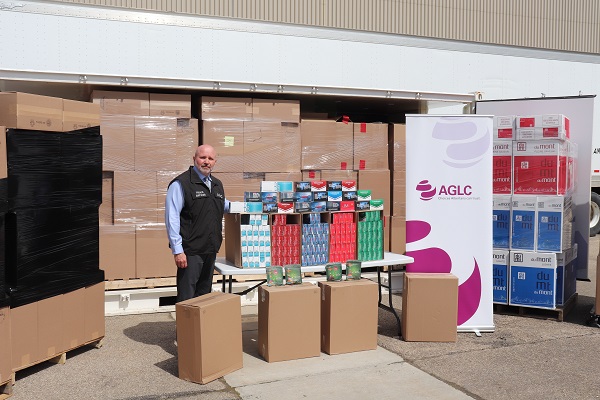
 Alberta22 hours ago
Alberta22 hours ago30 million contraband cigarettes valued at $25 million dollars seized in Alberta
-

 COVID-192 hours ago
COVID-192 hours agoCOVID Lab Leak: Over four later, EcoHealth Alliance funding is finally suspended
-

 Alberta2 days ago
Alberta2 days agoProvince announces next step to revamped health care system
-

 Health18 hours ago
Health18 hours agoSouth Korean president declares low birth rate a ‘national emergency,’ plans new ministry to address it
-

 Frontier Centre for Public Policy1 day ago
Frontier Centre for Public Policy1 day agoThe Toppling of the woke authoritarians
-
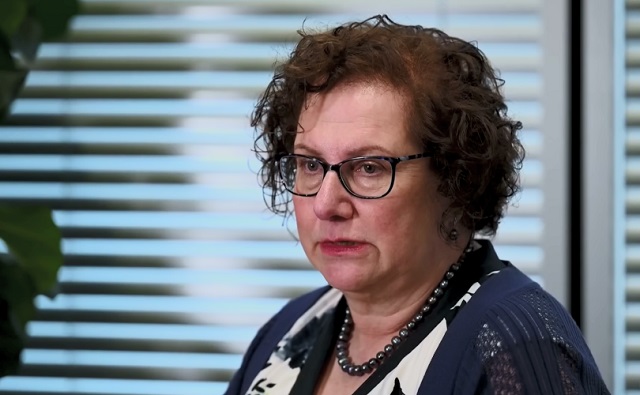
 Health18 hours ago
Health18 hours agoUK pediatrician who led review of child ‘transitions’ says US medical groups ‘misleading the public’



